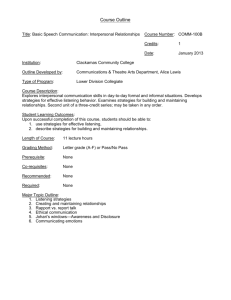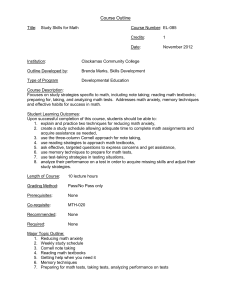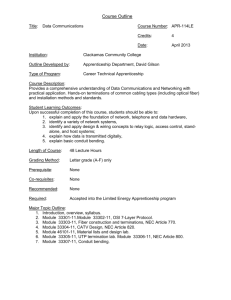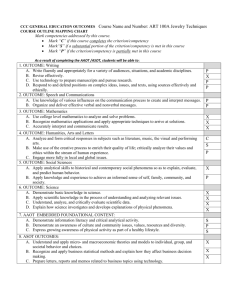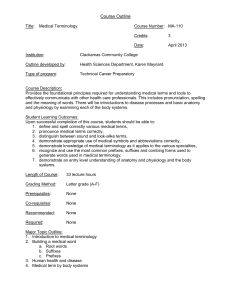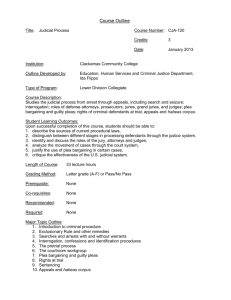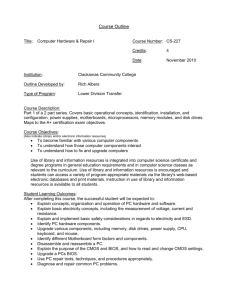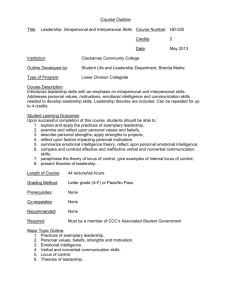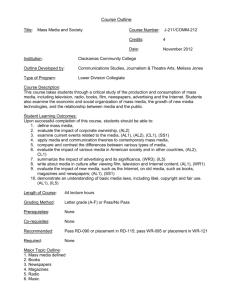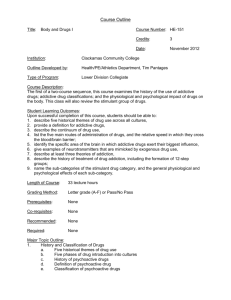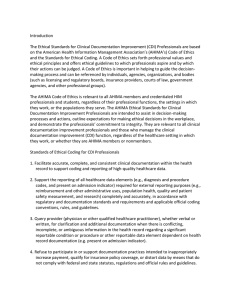New Program Health Informatics HIM 285 Outline
advertisement
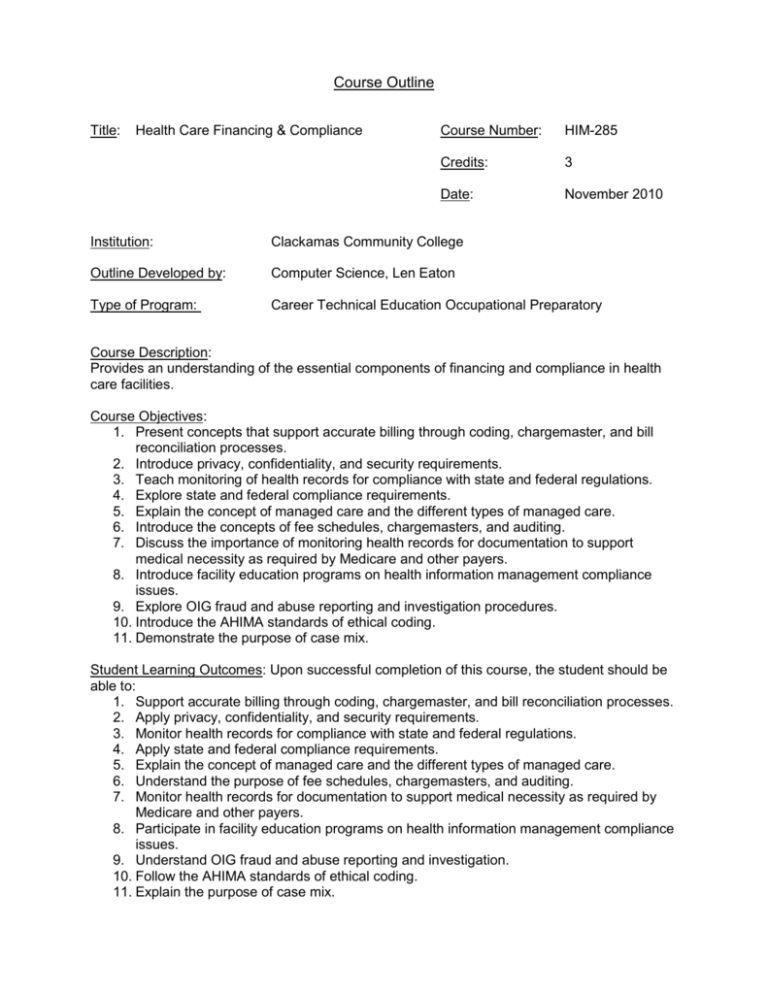
Course Outline Title: Health Care Financing & Compliance Course Number: HIM-285 Credits: 3 Date: November 2010 Institution: Clackamas Community College Outline Developed by: Computer Science, Len Eaton Type of Program: Career Technical Education Occupational Preparatory Course Description: Provides an understanding of the essential components of financing and compliance in health care facilities. Course Objectives: 1. Present concepts that support accurate billing through coding, chargemaster, and bill reconciliation processes. 2. Introduce privacy, confidentiality, and security requirements. 3. Teach monitoring of health records for compliance with state and federal regulations. 4. Explore state and federal compliance requirements. 5. Explain the concept of managed care and the different types of managed care. 6. Introduce the concepts of fee schedules, chargemasters, and auditing. 7. Discuss the importance of monitoring health records for documentation to support medical necessity as required by Medicare and other payers. 8. Introduce facility education programs on health information management compliance issues. 9. Explore OIG fraud and abuse reporting and investigation procedures. 10. Introduce the AHIMA standards of ethical coding. 11. Demonstrate the purpose of case mix. Student Learning Outcomes: Upon successful completion of this course, the student should be able to: 1. Support accurate billing through coding, chargemaster, and bill reconciliation processes. 2. Apply privacy, confidentiality, and security requirements. 3. Monitor health records for compliance with state and federal regulations. 4. Apply state and federal compliance requirements. 5. Explain the concept of managed care and the different types of managed care. 6. Understand the purpose of fee schedules, chargemasters, and auditing. 7. Monitor health records for documentation to support medical necessity as required by Medicare and other payers. 8. Participate in facility education programs on health information management compliance issues. 9. Understand OIG fraud and abuse reporting and investigation. 10. Follow the AHIMA standards of ethical coding. 11. Explain the purpose of case mix. Length of Course: 33 lecture hours Grading Method: Letter grade (A-F) or Pass/No Pass Prerequisites: None Major Topic Outline: 1. Commonly used billing concepts. 2. Privacy, confidentiality, and security requirements. 3. Monitoring of health records for compliance with state and federal regulations. 4. Managed care and the different types of managed care. 5. Monitoring of health required by Medicare and other payers. 6. Facility education programs on health information management compliance issues. 7. OIG fraud and abuse reporting and investigation procedures. 8. AHIMA standards of ethical coding. CCC AAOT/ASOT GENERAL EDUCATION OUTCOMES COURSE OUTLINE MAPPING CHART Course Title and Number: HIM-285 Health Care Financing & Compliance Mark outcomes addressed by this course: Mark “C” if this course completely addresses the outcome. Students who successfully complete this course are likely to have attained this learning outcome. Mark “S” if this course substantially addresses the outcome. More than one course is required for the outcome to be completely addressed. Students who successfully complete all of the required courses are likely to have attained this learning outcome. Mark “P” if this course partially addresses the outcome. Students will have been exposed to the outcome as part of the class, but the class is not a primary means for attaining the outcome and assessment for general education purposes may not be necessary. As a result of completing the AAOT /ASOT general education requirements, students will be able to: WR: Writing Outcomes 1. Read actively, think critically, and write purposefully and capably for academic and, in some cases, professional audiences. 2. Locate, evaluate, and ethically utilize information to communicate effectively. 3. Demonstrate appropriate reasoning in response to complex issues. SP: Speech/Oral Communication Outcomes 1. Engage in ethical communication processes that accomplish goals. 2. Respond to the needs of diverse audiences and contexts. 3. Build and manage relationships. MA: Mathematics Outcomes 1. Use appropriate mathematics to solve problems. 2. Recognize which mathematical concepts are applicable to a scenario, apply appropriate mathematics and technology in its analysis, and then accurately interpret, validate, and communicate the results. AL: Arts and Letters Outcomes i 1. Interpret and engage in the Arts & Letters, making use of the creative process to enrich the quality of life. 2. Critically analyze values and ethics within a range of human experience and expression to engage more fully in local and global issues. SS: Social Science Outcomes 1. Apply analytical skills to social phenomena in order to understand human behavior. 2. Apply knowledge and experience to foster personal growth and better appreciate the diverse social world in which we live. SC: Science or Computer Science Outcomes 1. Gather, comprehend, and communicate scientific and technical information in order to explore ideas, models, and solutions and generate further questions. 2. Apply scientific and technical modes of inquiry, individually, and collaboratively, to critically evaluate existing or alternative explanations, solve problems, and make evidence-based decisions in an ethical manner. 3. Assess the strengths and weaknesses of scientific studies and critically examine the influence of scientific and technical knowledge on human society and the environment. CL: Cultural Literacy Outcome ii 1. Identify and analyze complex practices, values, and beliefs and the culturally and historically defined meanings of difference. IL: Information Literacy Outcomesiii 1. Formulate a problem statement. 2. Determine the nature and extent of the information needed to address the problem. 3. Access relevant information effectively and efficiently. 4. Evaluate information and its course critically. 5. Understand many of the economic, legal, and social issues surrounding the use of information. “Arts and Letters” refers to works of art, whether written, crafted, designed, or performed and documents of historical or cultural significance. ii Must be embedded in a course that meets the outcomes for Arts and Letters, Social Science, or Science/Computer Science. iii Must be embedded in the general education required Writing courses Revised 2010-2011 to reflect Statewide AAOT outcomes i
